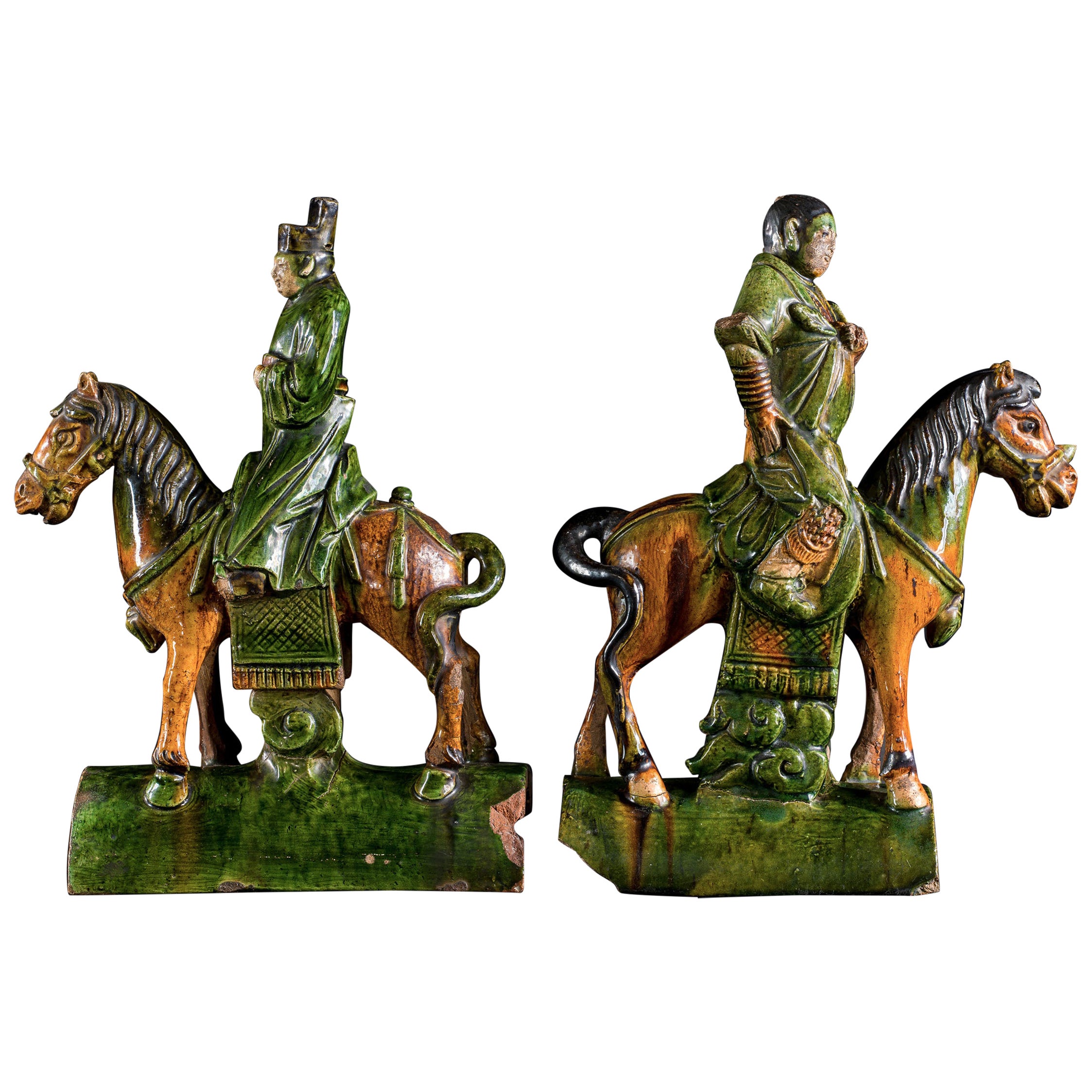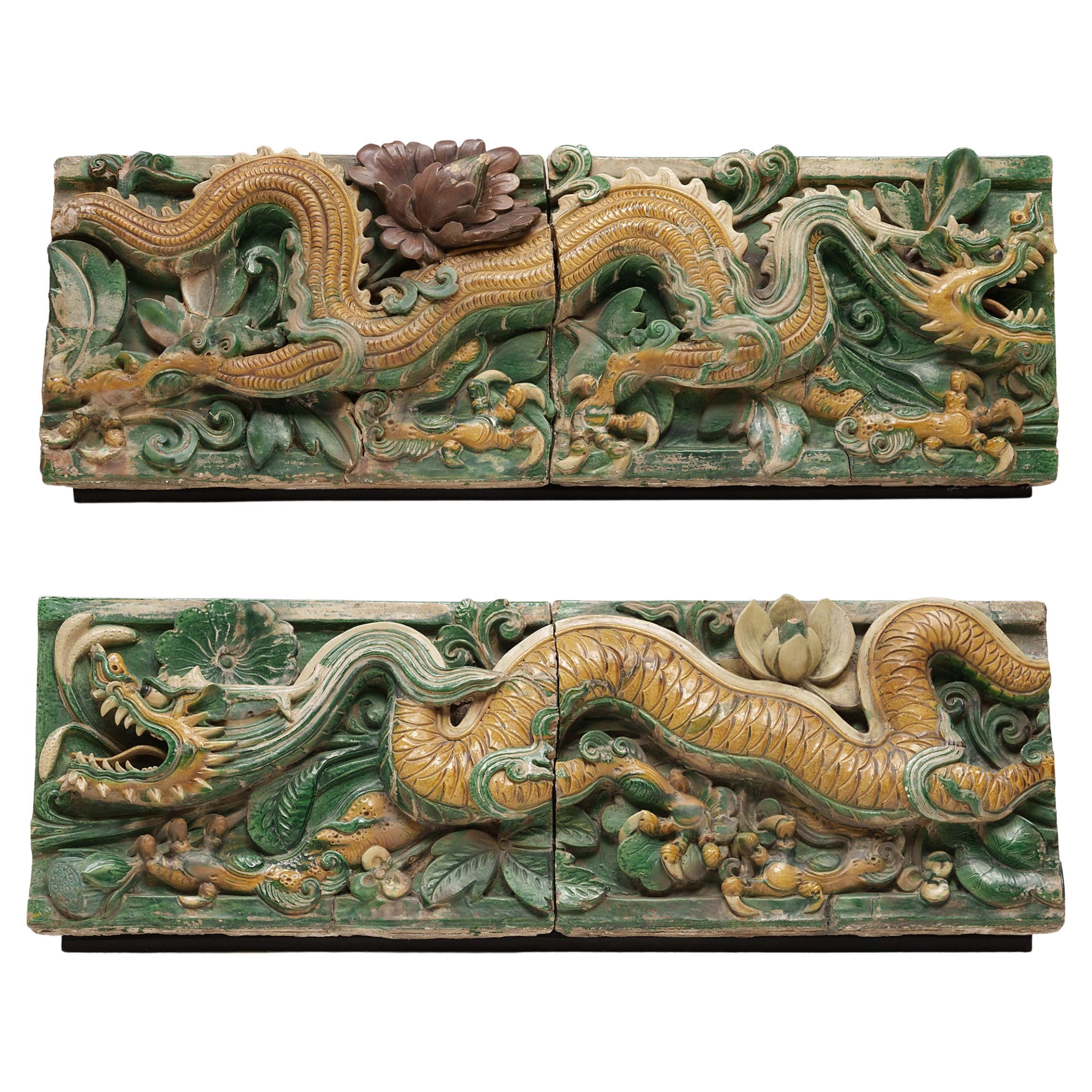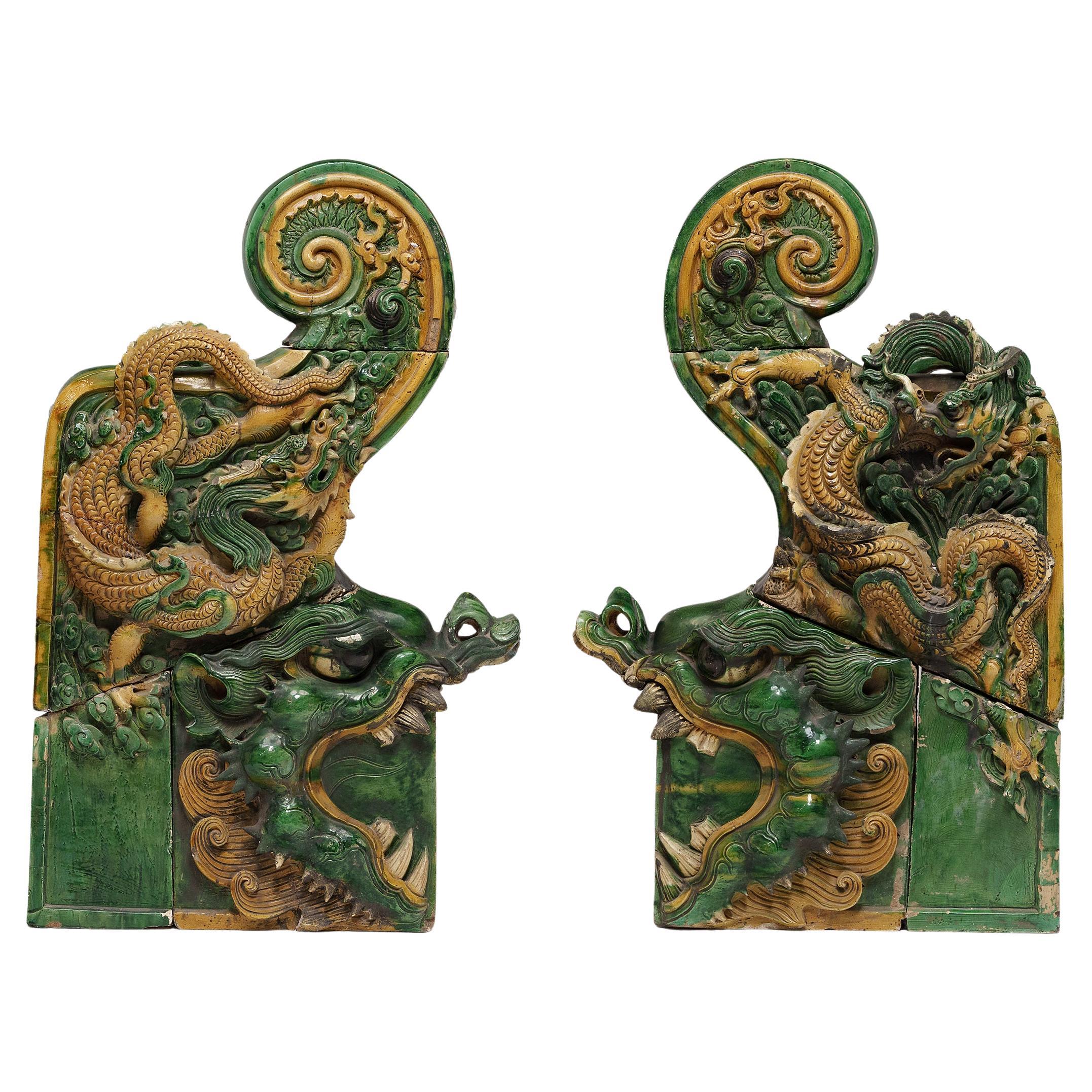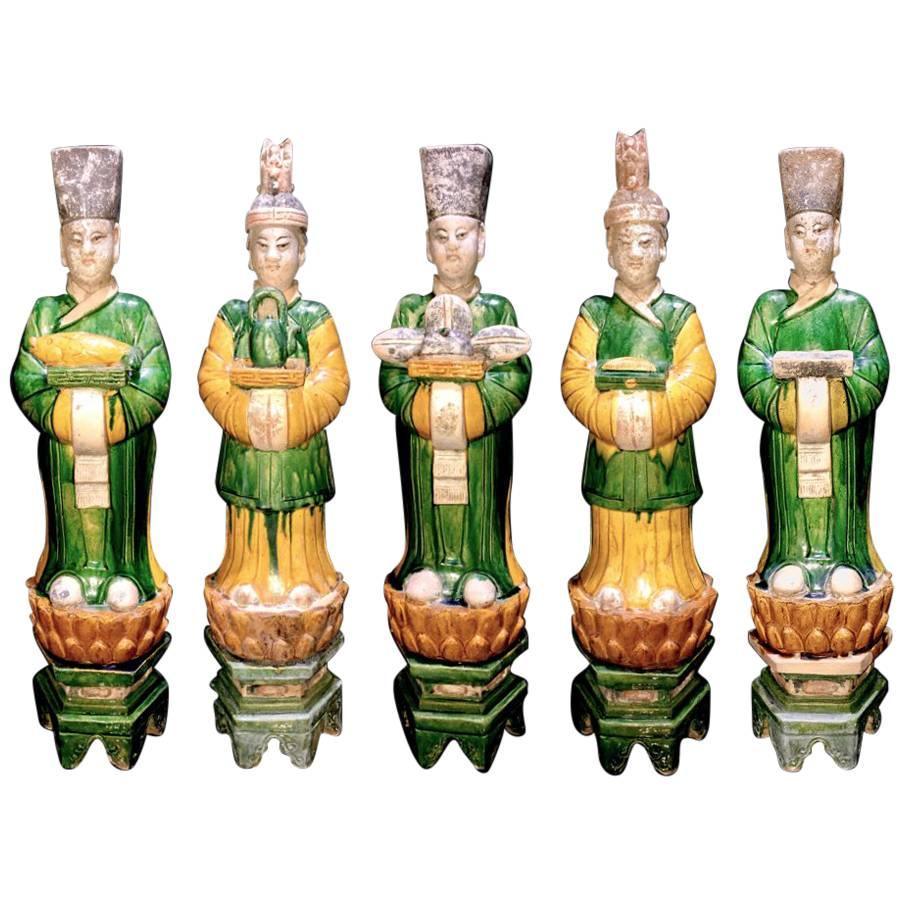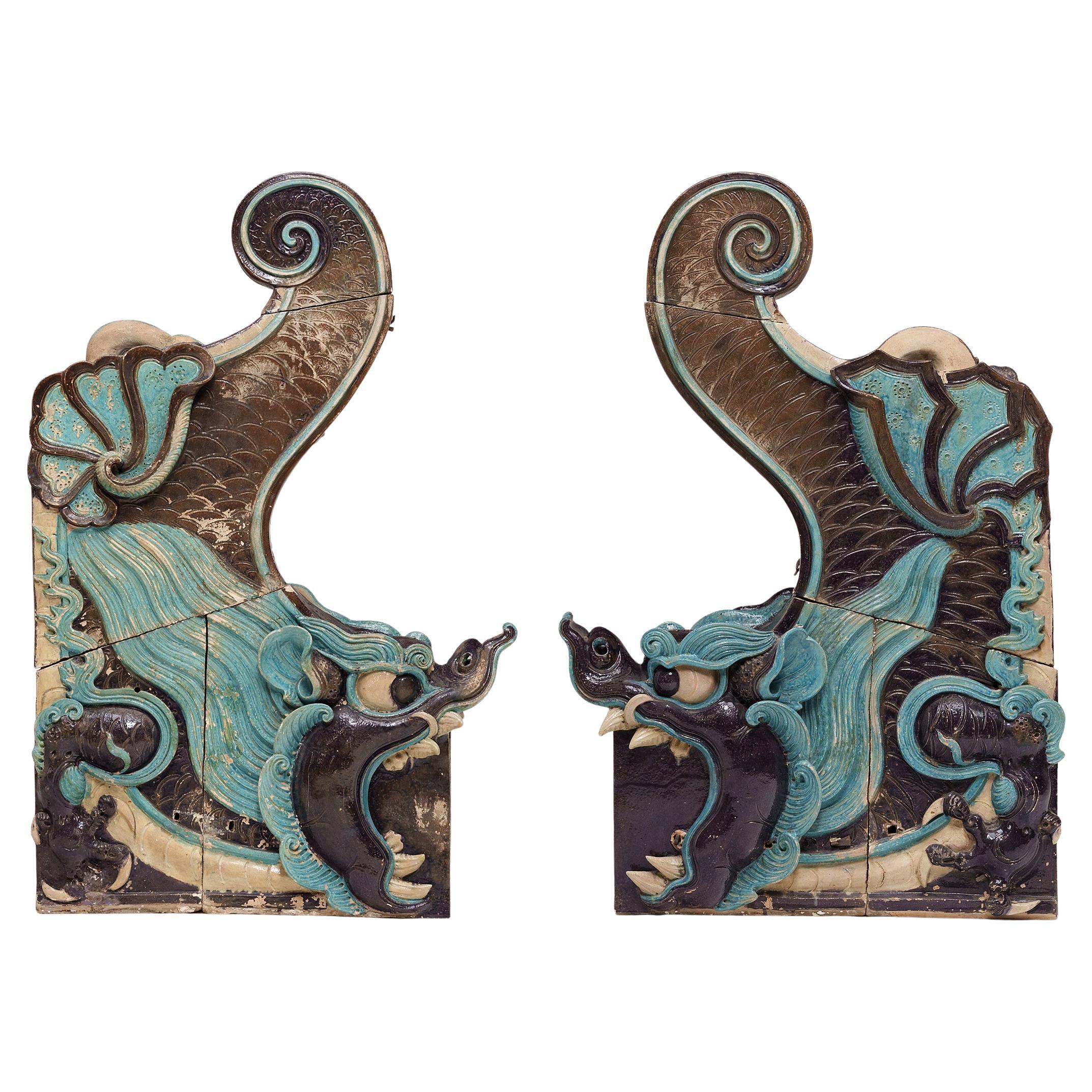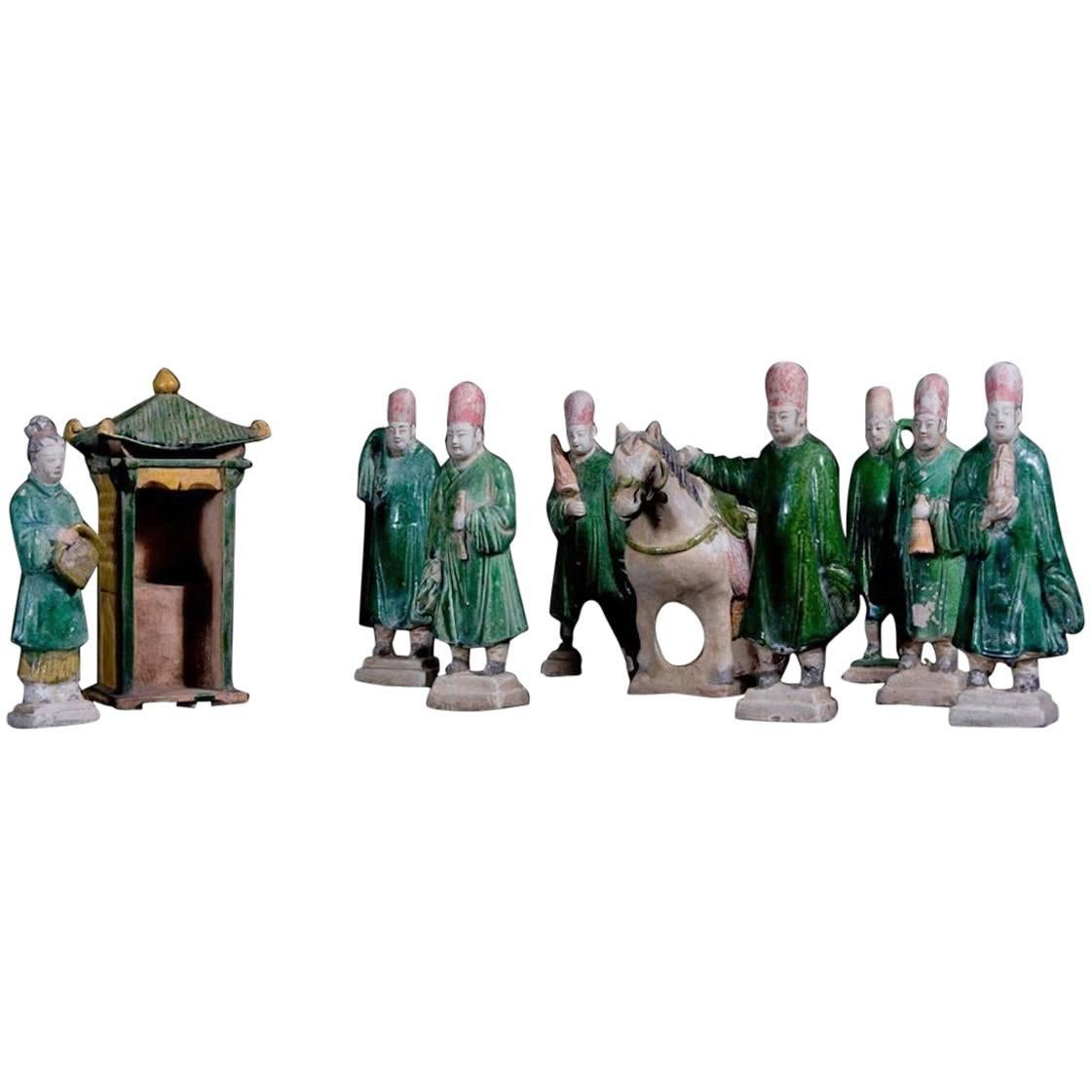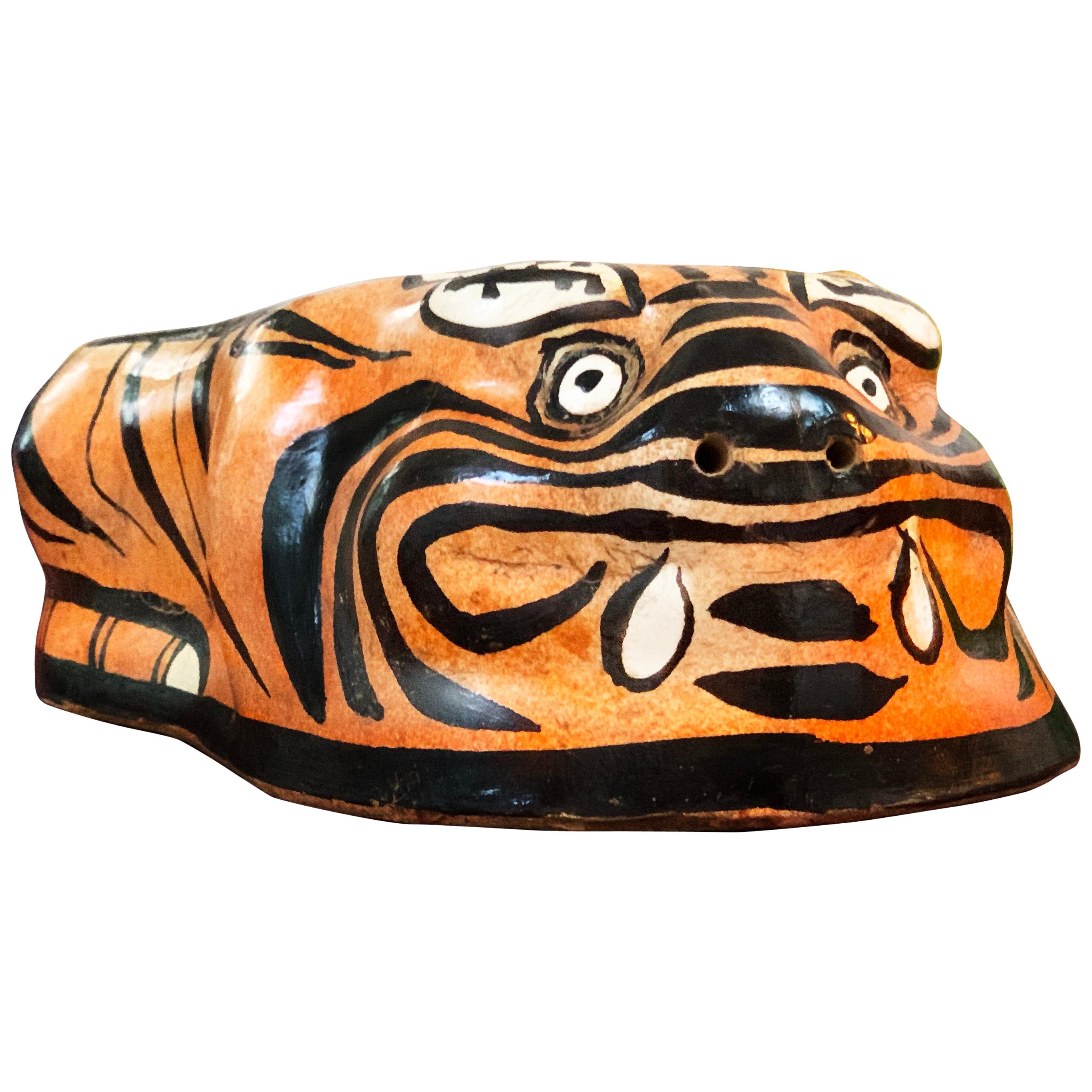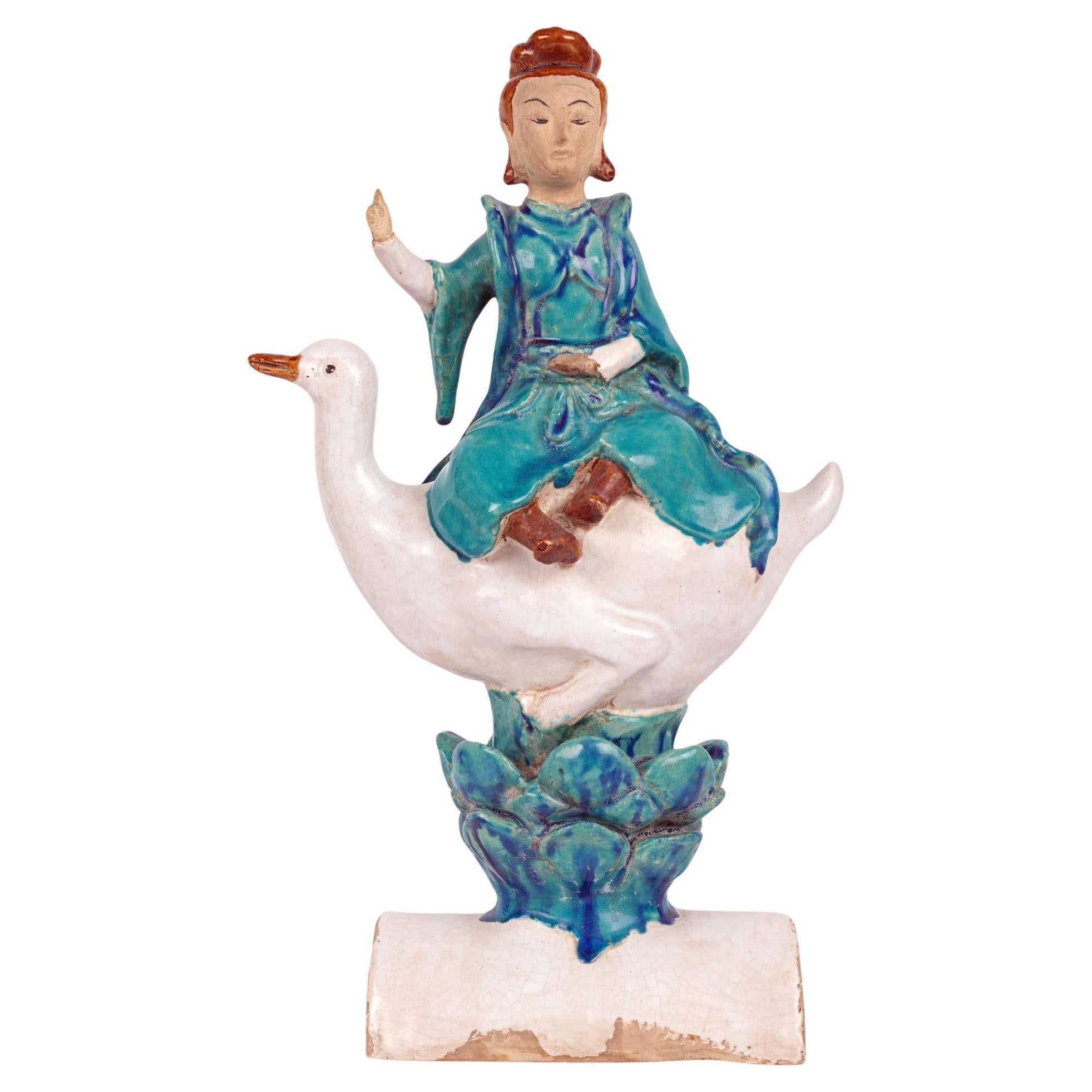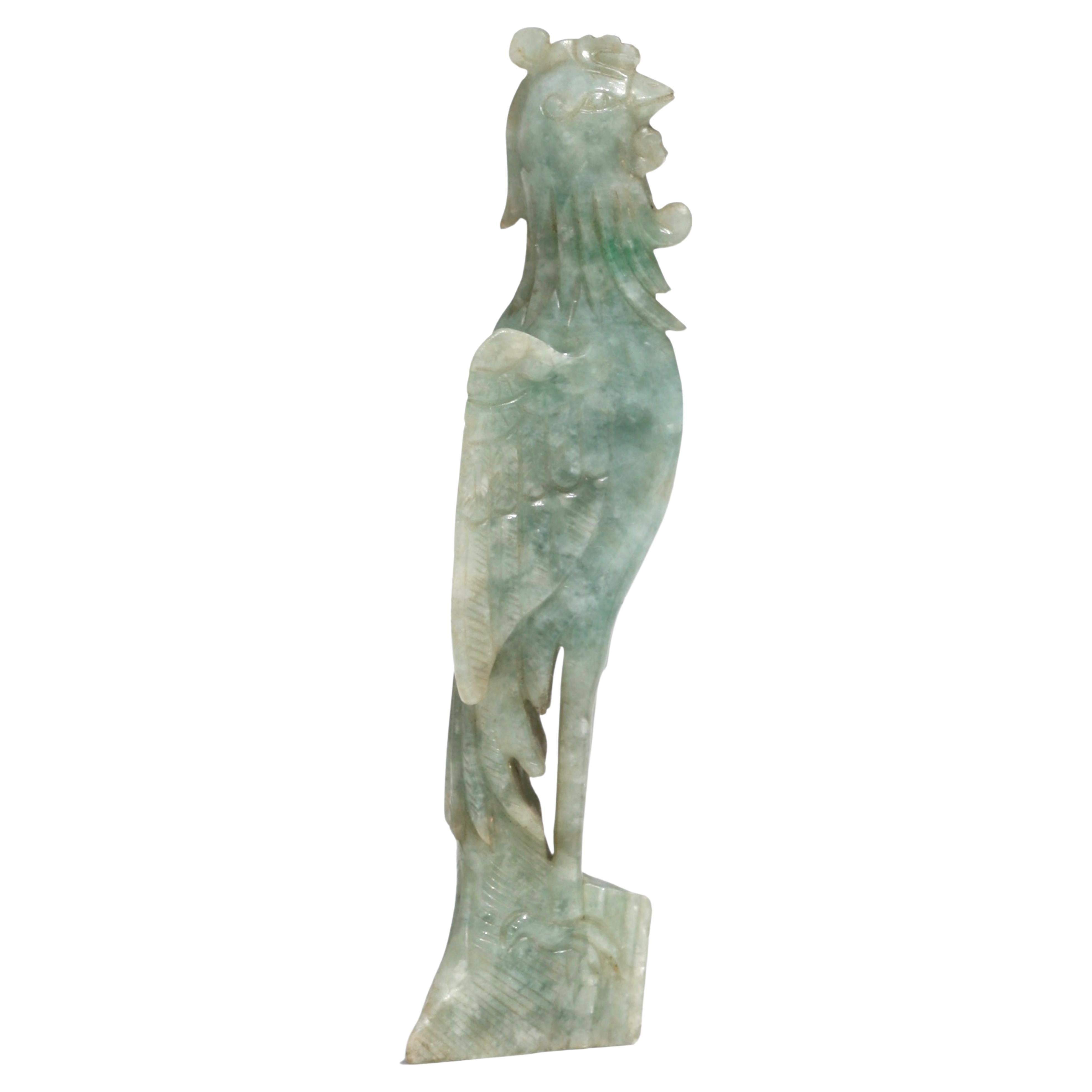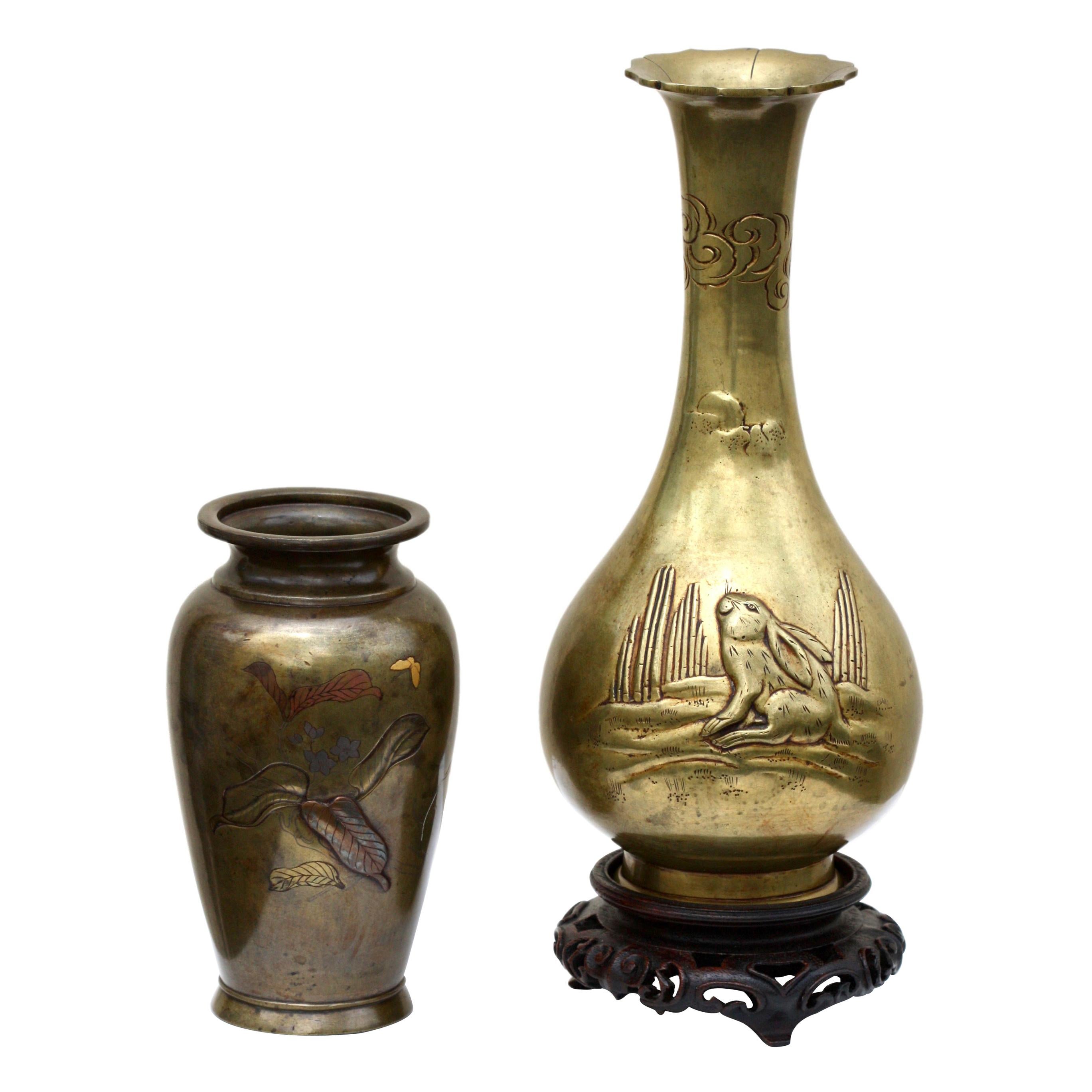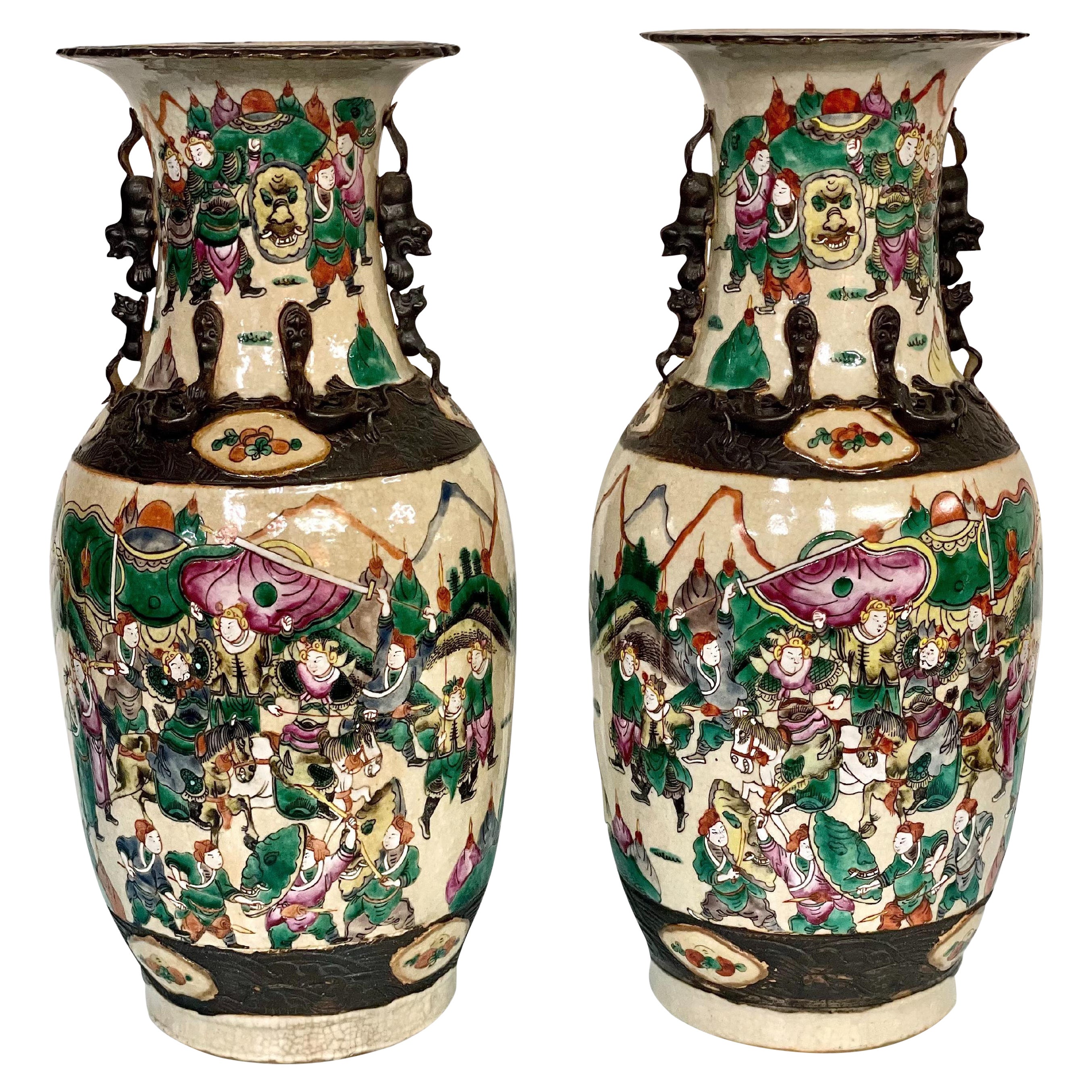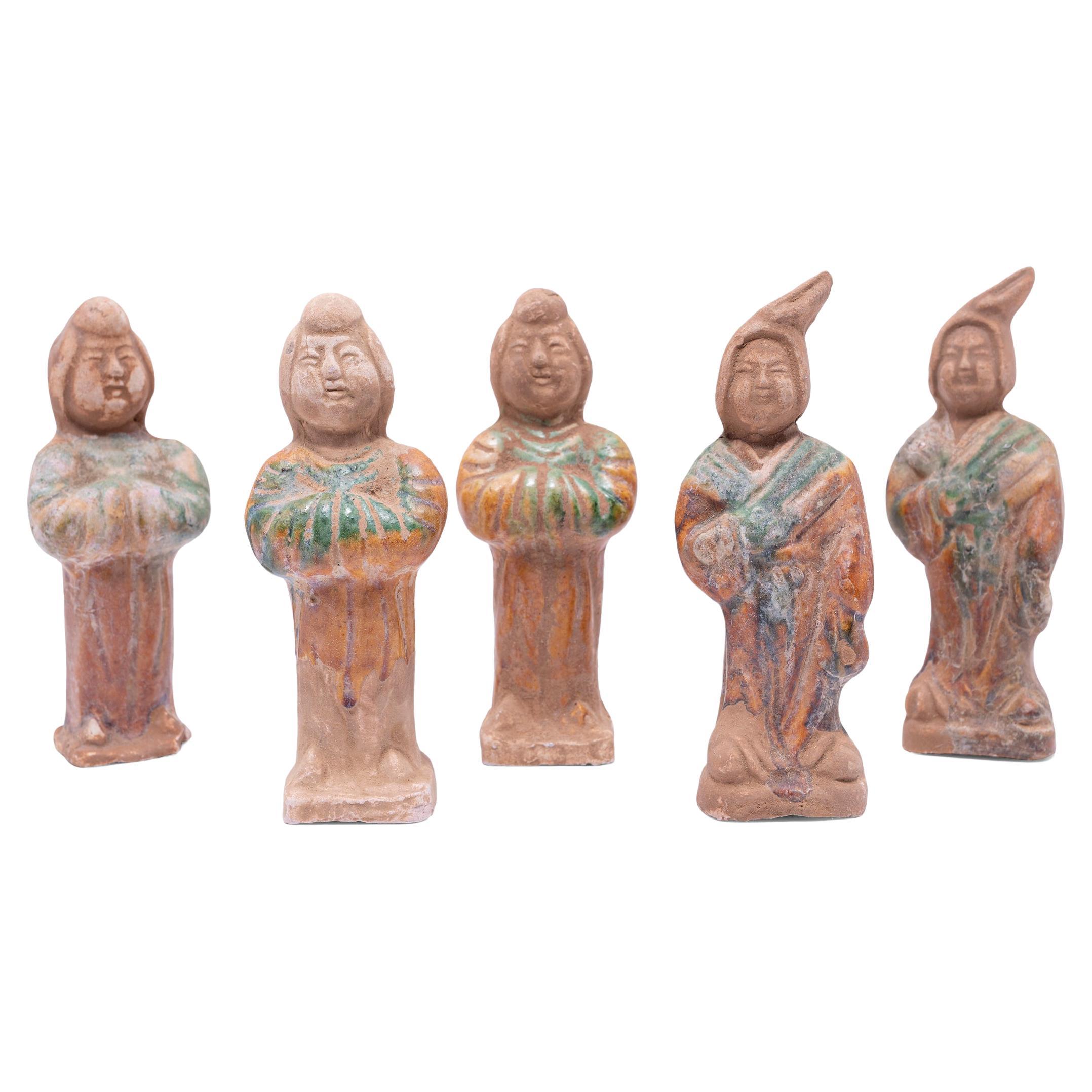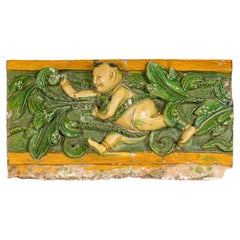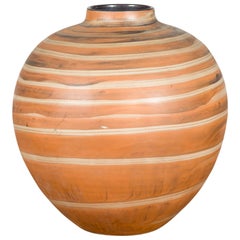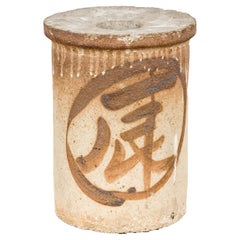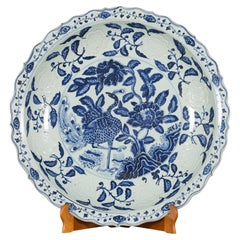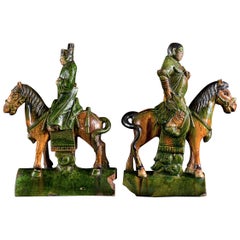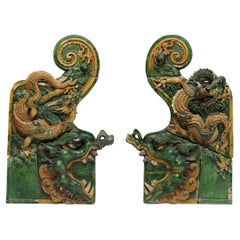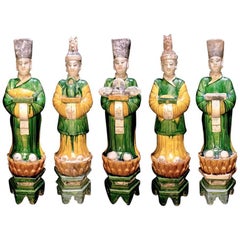Group of 5 Turquoise Roof Tiles Architectural Decor
View Similar Items
Want more images or videos?
Request additional images or videos from the seller
1 of 6
Group of 5 Turquoise Roof Tiles Architectural Decor
About the Item
- Dimensions:Height: 9 in (22.86 cm)Width: 24 in (60.96 cm)Depth: 1.5 in (3.81 cm)
- Style:Ming (Of the Period)
- Materials and Techniques:Ceramic,Glazed
- Place of Origin:
- Period:
- Date of Manufacture:15th or 16th Century
- Condition:Wear consistent with age and use. Please refer to the various additional photos for further condition detail and contact us with any questions!
- Seller Location:Yonkers, NY
- Reference Number:Seller: YN31671stDibs: LU863942357862
About the Seller
5.0
Platinum Seller
Premium sellers with a 4.7+ rating and 24-hour response times
Established in 1968
1stDibs seller since 2009
1,134 sales on 1stDibs
Authenticity Guarantee
In the unlikely event there’s an issue with an item’s authenticity, contact us within 1 year for a full refund. DetailsMoney-Back Guarantee
If your item is not as described, is damaged in transit, or does not arrive, contact us within 7 days for a full refund. Details24-Hour Cancellation
You have a 24-hour grace period in which to reconsider your purchase, with no questions asked.Vetted Professional Sellers
Our world-class sellers must adhere to strict standards for service and quality, maintaining the integrity of our listings.Price-Match Guarantee
If you find that a seller listed the same item for a lower price elsewhere, we’ll match it.Trusted Global Delivery
Our best-in-class carrier network provides specialized shipping options worldwide, including custom delivery.More From This Seller
View AllQing Dynasty Tricolor Roof Fragment Depicting a Boy Amidst Leaves
Located in Yonkers, NY
A Qing Dynasty period tricolor glazed terracotta roof fragment from the 19th century depicting a running boy in raised relief amidst leaves. This Qing Dynasty period terracotta roof fragment, dating back to the 19th century, showcases a vibrant tricolor glaze that breathes life into the depicted scene of a running boy amidst foliage in raised relief. Its historical value and artistic merit are evident through the skillful execution and vivid colors, which have been preserved remarkably over centuries. This piece, along with several others available, serves as a testament to the rich cultural heritage and intricate craftsmanship of the period. It can effortlessly transform any living space by introducing an element of classical Chinese artistry. Imagine this exquisite fragment mounted on a stand or displayed prominently on a wall, where it not only becomes a focal point but also sparks conversations about its origin and the symbolism behind the depicted motifs. Perfect for collectors or enthusiasts of Asian antiques, this piece bridges the gap between traditional decor and contemporary spaces, adding a touch of antiquity and sophistication. Its presence in a home office, library, or living room not only embellishes the space but also pays homage to the timeless elegance of Qing Dynasty art.
Category
Antique 19th Century Chinese Qing Ceramics
Materials
Terracotta
Striped Ceramic Jar with Spiraling Décor, Vintage
Located in Yonkers, NY
A vintage ceramic jar with spiral decor. This vintage jar captivates us with its striking spiral decor, where lighter hues contrast beautifully against th...
Category
Mid-20th Century Thai Jars
Materials
Ceramic
Antique Japanese Seto Ware Plant Stand with Calligraphy Décor
Located in Yonkers, NY
An antique Japanese Seto ware plant stand with calligraphy décor and circular top. This antique Japanese Seto ware plant stand, adorned with exquisite calligraphy décor, is a testame...
Category
Antique 19th Century Japanese Ceramics
Materials
Pottery
Large Porcelain Charger Plate with Hand-Painted Blue and White Décor
Located in Yonkers, NY
A large Chinese porcelain charger plate from the early 20th century, with hand-painted blue and white décor. Created in China during the ear...
Category
20th Century Chinese Ceramics
Materials
Porcelain
Blue and White Porcelain Teapot with Scrolling Foliage and Floral Decor
Located in Yonkers, NY
This vintage blue and white porcelain teapot, dating back to the mid-20th century, is a delightful piece that effortlessly combines fun...
Category
Mid-20th Century Chinese Tea Sets
Materials
Porcelain
Vintage Celadon Ceramic Charger Plate with Crackled Glaze – Elegant Table Decor
Located in Yonkers, NY
A vintage celadon ceramic charger plate with crackled texture. This elegant vintage ceramic charger plate features a delicate celadon glaze that enhances the simplicity and purity of...
Category
Late 20th Century Chinese Platters and Serveware
Materials
Ceramic
You May Also Like
Pair of Ming Dynasty Horsemen Roof Tiles
Located in London, GB
A pair of Chinese Ming Dynasty (1368-1644) sancai-glazed ridge tiles modelled as horse and rider. Both tiles are glazed in rich green and amber, the horses ...
Category
Antique 16th Century Chinese Ming Ceramics
Materials
Pottery
Pair of Chinese Ming Sancai Dragon Roof Tiles, c. 1650
Located in Chicago, IL
This incredible pair of sancai-glazed Chinese roof tiles were once installed as part of the elaborate roof of a Ming-dynasty temple or grand courtyard home. Dated to the 17th century...
Category
Antique 17th Century Chinese Ming Ceramics
Materials
Earthenware
Pair of Chinese Ming Sancai Chiwen Roof Tiles, c. 1650
Located in Chicago, IL
These monumental Chinese roof tiles were once installed as part of the elaborate roof of a Ming-dynasty temple or grand courtyard home. Dated to the 17th century or earlier, the scul...
Category
Antique 17th Century Chinese Ming Ceramics
Materials
Earthenware
Superb Set of 5 Elegant Court Attendants, Ming Dynasty, 1368-1644 AD TL Tested
Located in San Pedro Garza Garcia, Nuevo Leon
A stunning set of 5 graceful terracotta figurines from the Ming Dynasty '1368-1644' AD. These elegant attendants are standing on a yellow glazed lotus flower over a high hexagonal green plinth and wear fine robes in matching green and yellow glazes. The unglazed areas have pigmented colors in red, black and white. Each is carrying essential offerings for the royal family. The head is detachable as often seen on the larger figures from this period. Meticulously detailed facial expressions have been hand-painted.
Condition: Mint, finely preserved glaze and pigment, undamaged and no repairs.
Provenance: Ex. Danish Collection.
This set is guaranteed authentic and comes with a Certificate of Authenticity and TL Test from Laboratory Kotalla in Germany (The Oldest Thermoluminescence Testing Laboratory in the World).
Dimensions: Average 54 H cms
Burial figurines of graceful dancers, mystical beasts, and everyday objects reveal both how people in early China approached death and how they lived. Since people viewed the afterlife as an extension of worldly life, these figurines, called mingqi, sometimes referred as “spirit utensils” or “vessels of ghosts” disclose details of routine existence and provide insights into belief systems over a thousand-year period.
The Ming dynasty was the ruling dynasty of China – then known as the Empire of the Great Ming – for 276 years (1368–1644 AD). Founded by Chu Yuan-chang, the rebel leader that was successful in removing the mongols from the throne. Chinese control was re-asserted in China and eastern Asia. Literature became more important, schools were created, and the justice system was reformed. The Ming dynasty is described by some as "one of the greatest eras of orderly government and social stability in human history,” was the last imperial dynasty in China ruled by ethnic Han Chinese.
The practice of burying ceramic objects with the deceased went into decline from the 10th to the 14th Century AD. There was a revival in placing miniature representations of glazed terracotta objects such a furniture, food offerings, horses, miniature statues...
Category
Antique 15th Century and Earlier Chinese Ming Antiquities
Materials
Terracotta
Pair of Chinese Blue Glazed Chiwen Roof Tiles, c. 1750
Located in Chicago, IL
These monumental Chinese roof tiles were once installed as part of the elaborate roof of an early Qing-dynasty temple or grand courtyard home. Dated to the 18th century, the sculptur...
Category
Antique 18th Century Chinese Qing Ceramics
Materials
Earthenware
Impressive Terracotta Funerary Procession - Ming Dynasty, China '1368-1644 AD'
Located in San Pedro Garza Garcia, Nuevo Leon
Impressive Funeral Ensamble of 10 Terracotta Glazed Figures in green and caramel colors depicting a votive procession with a palanquin, his four carriers, a horse, a stableman, two musicians, and an offering carrier.
This ensemble is accompanied by a Certificate of Authenticity, and Certificate of Expertise by Jean-Yves Nathan - Specialist in Asian Arts for the CEDEA (The European Confederation of Art Experts).
Burial figurines of graceful dancers, mystical beasts, and everyday objects reveal both how people in early China approached death and how they lived. Since people viewed the afterlife as an extension of worldly life, these figurines, called mingqi, sometimes referred as “spirit utensils” or “vessels of ghosts” disclose details of routine existence and provide insights into belief systems over a thousand-year period.
The Ming dynasty was the ruling dynasty of China – then known as the Empire of the Great Ming – for 276 years (1368–1644 AD). Founded by Chu Yuan-chang, the rebel leader that was successful in removing the mongols from the throne. Chinese control was re-asserted in China and eastern Asia. Literature became more important, schools were created, and the justice system was reformed. The Ming dynasty is described by some as "one of the greatest eras of orderly government and social stability in human history,” was the last imperial dynasty in China ruled by ethnic Han Chinese.
The practice of burying ceramic objects with the deceased went into decline from the 10th to the 14th Century AD. There was a revival in placing miniature representations of glazed terracotta objects such a furniture, food offerings, horses, miniature statues...
Category
Antique 15th Century and Earlier Chinese Ming Antiquities
Materials
Terracotta
Recently Viewed
View AllMore Ways To Browse
Chinese Roof Tiles
Antique Chinese Roof Tile
Ceramic Roof Tiles
Ming Tile
30 Or 31 Or 36 Inch Game Table With Chrome
Garnet Or Ruby Vintage Antique Earrings
Walnut Or Pecan Wood Coffee Table End Table Riound Commode Table With Doors
Queen Size Bedhead Or Headboard
Antique French Or Italian Extension Dining Tables
Gold Shrimp Or Dome Rings
Mother Of Pearl Inlay Side Table Moroccan Or Syrian
Louis Xv Commide Nightstand Or Side Table With Marble Top
Scandnavian Modern Dining Sets Mahogany Or Rosewood
Antique Or Vintage Bible Or Dictionary Stand
Limoges White Swirl Ginger Jar Or Vase
Pairs Of Wire Or Metal Baskets
1carat Pink Or Blue Sapphire Ring
Turqoise Color Pottery Or Jars
